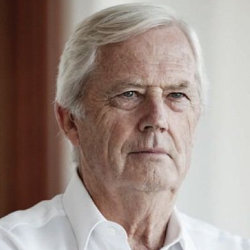Sino-U.S. clash is a great power competition, not ‘Cold War II’ (The Japan Times)
Nov 27, 2018CHINA – In the Trump administration’s most substantial foreign policy speech thus far, delivered at the Hudson Institute on Oct. 4, Vice President Mike Pence accused China of a “whole-of-government” attack on U.S. interests and vowed the United States will respond with robust countermeasures.
Pence leveled three charges. First, “Beijing is … using political, economic and military tools, as well as propaganda, to advance its influence and benefit its interests” in the U.S., including efforts to influence and interfere in domestic U.S. politics.
Second, although much of the ninefold growth of China’s economy had been powered by U.S. investment and markets, China had used “an arsenal of policies … including tariffs, quotas, currency manipulation, forced technology transfer, intellectual property theft and industrial subsidies” to build its manufacturing base at U.S. expense.
Third, determined to push the U.S. out of the Western Pacific and stop it from coming to the aid of allies, “Beijing has prioritized capabilities to erode America’s military advantages on land, at sea, in the air and in space.” America “will not be intimidated” and will prevail against Chinese malfeasance, Pence concluded.
Coming on top of the still-building trade war, Pence’s somber declaration has been widely interpreted as heralding the launch of “Cold War II.” This conceptualization is deeply flawed on five critical dimensions that defined the Cold War. It was a transcendental rivalry in which the U.S. and Soviet Union were engaged in a cold fight-to-the-death of each other’s political ideology, economic model and global power aspirations. The current China-U.S. rivalry is an old-fashioned, great power competition.
First, despite the pervasive crisis of liberal democracy, there is no serious competition from China of communism as an alternative organizing principle of a political system. Communism stands discredited as both a political ideology and as an organizing principle of the economy.
After 1945, many people in Europe and developing countries flirted with communism for their own country. Local communist parties were major political assets for Moscow. There is nothing comparable today vis-a-vis China. Today’s Confucius institutes are not China’s equivalent of yesterday’s branch-plant communist parties that often functioned as agents of Soviet influence. The lies on which the Soviet Union had been constructed and the full horrors of its totalitarian ideology were revealed only too starkly with the collapse of the Soviet empire.
Conversely, the Trump crowd is totally uninterested in exporting democracy and promoting human rights all over the world. He leads a purely transactional administration that wants to make America a manufacturing and industrial powerhouse again, repatriate industry and jobs, but leave others to their own choices and destiny so long as they do not cut across U.S. interests, not values. His ability to get along better with autocrats than fellow democrats is no accident.
Second, the command model of the economy is equally discredited. Disenchantment with neoliberalism that privileges markets and big finance over people and the public interest has mounted, producing a shrinking circle of winners and expanding numbers of left-behinds. But there are no longer any champions of Soviet-style rigid state planning with the government allocating resources, setting production targets, fixing the price of inputs and goods, and controlling supply and demand.
Beijing shows no interest in exporting its economic model. China’s approach, with its unique historical trajectory, would be impossible for others to replicate on size, the role of a party-state and the unique conditions of expanding world markets and global growth in the three decades since the early 1980s.
Third, the Soviet Union was a global military superpower that projected its power to all continents (Vietnam in Asia, Angola in Africa, Cuba in Latin America were prominent examples) but lacked other attributes of a great power. The spine of the Cold War as a military confrontation ran along the middle of Europe. China is a formidable regional and continental power but far from a global military power. It does not confront the U.S. militarily outside Asia-Pacific. Within Asia, there is no one dividing line with U.S.-led and Chinese forces arrayed against each other on opposite sides.
Unlike the Soviet Union, however, China is a comprehensive national power. This will sharply reduce the chances of success of any U.S. containment policy.
Fourth, the U.S. and Soviet Union were leaders of rival blocs. NATO and the Warsaw Pact were rival military alliances, and the European Community and Comecon were competing economic groupings. Allies had minimal interactions with the Soviet bloc, and instead worked with Washington against the common Soviet threat. The deployment of NATO missiles in Europe in the 1980s over the angry protests of a powerful peace movement, which led directly to the Intermediate-Range Nuclear Forces (INF) Treaty in December 1987, was an excellent example.
As Germany’s former Foreign Minister Sigmar Gabriel notes, today “dividing and weakening Europe is the strategic goal of the ideological hardliners in and around the White House.” One result is Washington’s unilateral decision to abrogate the INF Treaty. In response, German Foreign Minister Heiko Maas urged Washington to consider the consequences of this for Europe and for the future of nuclear disarmament.
Other countries have a far more complex array of interests-based relationships with China than they ever had with the Soviet Union. On climate change, most have sided with China against the U.S. With respect to the Iran nuclear deal, the unilateral U.S. walkout and threat of secondary sanctions has led to collective efforts by China, Russia and the Europeans to circumvent U.S. sanctions. While during the Cold War trade lines ran through the U.S. with only thin trading volumes with the Soviet bloc, today twice as many countries have China as their biggest trading partner as the U.S.
Fifth, the respective bilateral nuclear equations are not comparable. Unlike rough nuclear equivalence between Moscow and Washington, China holds just 280 nuclear bombs compared with 6,450 in the U.S. arsenal (and 7,000 in Russia’s). Beijing has given no indication of a sprint to nuclear parity. Ironically, the U.S. may have been motivated to jettison the INF Treaty as much to counter non-nuclear threats from China as to respond to alleged Russian violations.
None of this is to pass judgment on the accuracy of the U.S. diagnosis of the trade fights, strategic competition and deepening mistrust with China. Trump’s actions confirm a massive turnaround in U.S. policy from strategic engagement to combative confrontation, with lots of collateral damage from U.S. efforts to check China’s rise, continue to write and police global rules, and dominate the world order. My argument is merely that the Cold War metaphor is structurally flawed and carries the operational danger of heightening tensions and provoking a very hot war.
Ramesh Thakur, a former U.N. assistant secretary-general, is a professor emeritus in the Crawford School of Public Policy, Australian National University. His most recent book is “The United Nations, Peace and Security: From Collective Security to the Responsibility to Protect.” (Cambridge University Press).
This article was published by The Japan Times on the 15th of November 2018.




